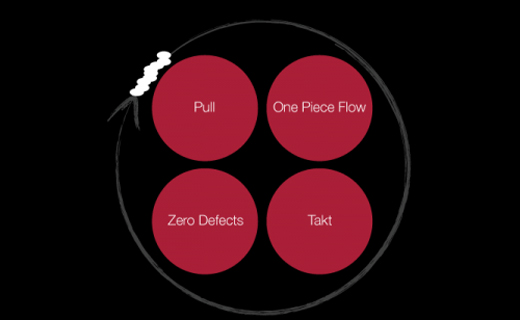Four Principles of Lean Management
Learn about Lean Management Principles and how they can help your company eliminate waste and create value for your customers.
Lean is a management philosophy - a way of thinking. It considers first and foremost what the customer is willing to pay for or in other words - added value. Activities that do not add value to the end product or customer are defined as waste and should be reduced or eliminated to free up resources to be used for adding value
The second major component of Lean is the respect for the employee and their role in adding value to the end product or customer. Employees who embrace Lean principles are empowered and motivated to critically look at value generating activities and continuously improve them or eliminate those that don’t.

The principles of lean management:
Focus on value first
The purpose of a business is to acquire and keep customers in order to grow profitably. If the customers’ needs are not fully met, especially in a highly competitive market, that company will not perform and fail to be profitable. Fulfilling the customer’s needs is about defining and delivering what is valuable to them i.e. what they are willing to pay for. This may be a product and / or service. Everything else, by default is waste. Providing value for the customer, being effective and efficient, is the core of Lean Thinking. A business run in this way, keeps both customers, shareholders, and employees happy.
Create a Lean environment
Lean principles are a framework to guide an organization while implementing Lean Thinking. Although these principles are commonly associated with manufacturing, they are just as valid for processes in other disciplines. At Four Principles, we thought they were so important, we named the company after them.
Establish a pull system
Allow demand to pull goods or services - only do what is required when requested by the end customer or the next step in a process. Value is pulled through a process rather than being created in batches or as capacity constraints allow. This minimizes overproduction, stocks and ultimately working capital.
Create one piece flow
Enable value to flow - the addition of value needs to be uninterrupted through the processes across the value stream. Focusing on the ideal, the addition of value of one single piece at a time enables us to optimally align process steps across the business while eliminating wasteful activities.
Work in takt
Work in a rhythm according to the pace of customer demand - takt is the German term for timing. This pace is how fast you need to manufacture a product or offer a service in order to fill your customer orders. It provides the heartbeat of a Lean system that allows us to balance work content and achieve a continuous flow through the business. It also allows us to adjust the rhythm and respond flexibly to changes in the marketplace.
Strive for zero defects
Stop and fix when something goes wrong - defects are easily identifiable at or very close to the point at which they arise. By addressing the root cause of the defect immediately and neither accepting nor passing on defects, subsequent defects and problems are avoided and overall product or service quality is improved.
If you want to become the most efficient and effective competitors in your industry, try the Lean management and its principles for better results. It is worth it!
Hits: 11393 | Leave a comment
Tags:Lean management, company, business, industry, management, flow, employee, product, customer, value, resource, principle, focus, takt, environment, organisation, pull system, zero defects, quality, efficient, effective
Author: Boyana Ivanova on
Be Global Fashion Network - The global authority on men's suits, made-to-measure and made-to-order
The voice of the professionals in the men's suit business
If you want to share your knowledge and contribute to the site, please email us at contributor@bgfashion.net Don't miss this opportunity as this will be a free advertisement for yourself and your menswear brand.













